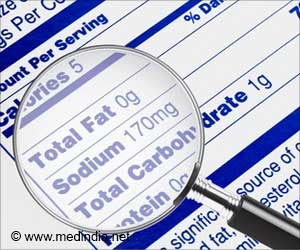A new report updates values for sodium and potassium dietary reference intake (DRIs) and also introduces new category for sodium based on chronic disease risk reduction.

‘The report reaffirms the importance of consuming sodium within the levels of DRIs to reduce the risk of hypertension and chronic diseases.’





Sodium and potassium are interrelated, essential nutrients that play vital functional roles in the body, including being important for nerve signal transmission, muscle contraction, and fluid balance. Both nutrients have been linked to risk of chronic disease, particularly cardiovascular disease, the report says. Possible associations between sodium intake with other adverse health outcomes have also been suggested. The physiological essentiality of sodium and potassium, in conjunction with their relationships to adverse health effects including chronic disease risk, called for a new approach to establishing DRIs. Sodium
The updated sodium AIs are 110 mg daily for infants 0-6 months; 370 mg daily for infants 7-12 months; 800 mg daily for children ages 1-3; 1,000 mg daily for ages 4-8; 1,200 mg daily for ages 9-13; and 1,500 mg daily for ages 14 and older. There remains limited evidence on sodium intakes below 1,500 mg per day for adults, which prevented the committee that conducted the study from considering further reductions in the sodium AI.
There is sufficient evidence to characterize the relationship between sodium intake and risk of chronic disease. Therefore, the committee established a Chronic Disease Risk Reduction Intake (CDRR) for sodium using evidence of the beneficial effect of reducing sodium intake on cardiovascular disease risk, hypertension risk, systolic blood pressure, and diastolic blood pressure. Reductions in intakes that exceed the sodium CDRR are expected to reduce chronic disease risk within the apparently healthy population. For individuals ages 14 and older, the CDRR recommendation is to reduce sodium intakes if above 2,300 mg per day. The committee also established a sodium CDRR for children ages 1-13. The effect of sodium intake on blood pressure that was used to inform the sodium tolerable upper intake level (UL) established in the 2005 DRI report is part of the evidence base that informed the CDRR.
Most U.S. and Canadian populations consume sodium above both the AI and CDRR values. There is no concern of sodium inadequacy in the population, the report says. Reducing sodium intake has a greater effect on adults with hypertension than on adults with normal blood pressure, but the benefits of reducing sodium intake toward the sodium CDRR or below apply to both groups.
Advertisement
The updated potassium AIs are 400 mg daily for infants 0-6 months; 860 mg daily for infants 7-12 months; 2,000 mg daily for children ages 1-3; and 2,300 mg daily for ages 4-8. The potassium AIs for other age groups range from 2,300 to 3,400 mg per day, based on sex and life-stage groups. The potassium AIs in this report are lower than those established in 2005. This difference is due, in part, to the expansion of the DRI model in which consideration of chronic disease risk reduction was separate from consideration of adequacy.
Despite moderately strong evidence that potassium supplementation reduces blood pressure, particularly among adults with hypertension, a potassium CDRR cannot be established because of unexplained inconsistencies in the body of evidence, a lack of intake-response relationship, and limited evidence for relationships between potassium intake and chronic disease risk. The lack of a potassium CDRR does not necessarily mean a lack of an effect of potassium intake on chronic disease risk, the report says, but rather a lack of evidence to characterize the effect.
The committee identified a number of research needs that would help inform future potassium and sodium DRIs, such as additional research on the interrelationship between potassium and sodium intakes. In addition, with the vast majority of U.S. and Canadian populations consuming sodium at levels above the CDRRs, opportunities exist to find solutions to reduce population sodium intakes.
Source-Eurekalert















